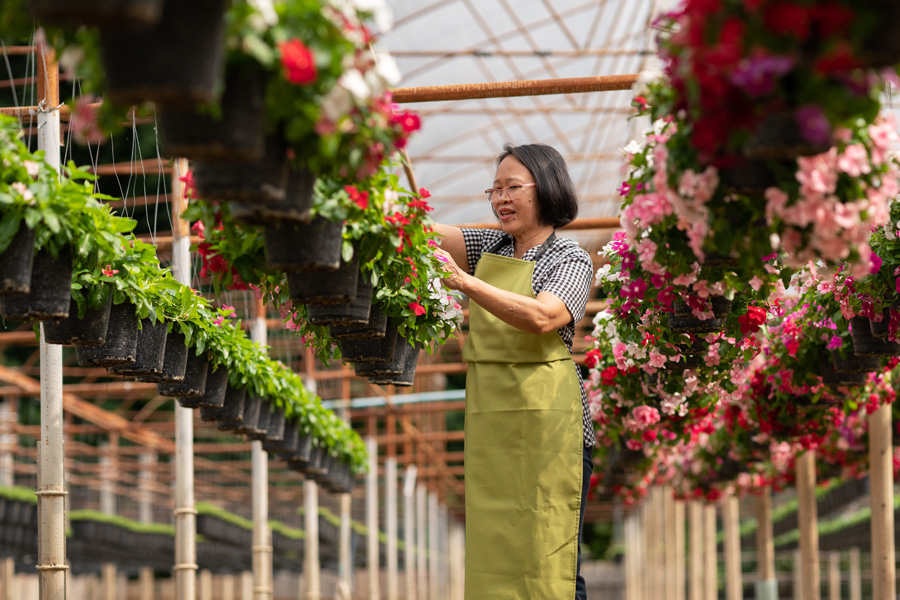Economics and Money
-

AP 130-2-10
2024 Fruits and Tree Nuts Outlook
1. High prices for peach producers helped a strong producer price index in the 2022–2023 crop season. The PPI is expected to stay strong in 2024.
2. Favorable prices came from production shortages, caused by bad weather in Q1 of 2023 that devasted the Georgia and South Carolina peach industries.
3. Citrus experienced the lowest production recorded in 50 years, and growers now prefer fresh market citrus instead of processed.
4. For blueberries, the newly signed memorandum to export 800 tons to the EU market will help maintain strong prices in the 2024 crop season.Esendugue Greg Fonsah and Ben Campbell
|
-

AP 130-2-11
2024 Vegetables and Pulses Outlook
1. Total harvested area of vegetables and pulses decreased by 3.2% from 2021 to 2022, and fresh and processed vegetable area harvested decreased by 5.1%; the situation is expected to deteriorate in 2024.
2. 2022 total imports of vegetables and pulses were $18.7 billion, an increase of 11.1% compared to 2021; this import trend is expected to continue.
3. Per capita vegetable consumption may increase in 2024 but will not attain the level seen in the years 2020–2022.Esendugue Greg Fonsah and Ben Campbell
|
-

AP 130-2-13
Timber Situation and 2024 Outlook
1. Demand for softwood lumber and structural panels is expected to improve as interest rates drop and single-family housing starts resume their long-term trajectory.
2. Increased softwood lumber mill capacity across the South adds upward pressure on pine sawtimber prices; however, the region’s oversupply of sawtimber trees on the stump is expected to exert strong downward pressure on prices.
3. Pulpwood prices are expected to decline (at a slower pace) and stabilize in the second half of 2024.
Forecast by Yanshu Li, UGA, Associate Professor and Forest, Economics, and Taxation Specialist; Joe Parsons, UGA, Director of the Harley Langdale, Jr. Center for Forest Business; Amanda Lang and Pat Jolley, Forisk ConsultingBen Campbell and Yanshi Li
|
-

AP 130-2
2024 Georgia Ag Forecast
Each year, UGA’s agricultural economists develop a comprehensive overview to help various sectors of the agriculture industry navigate the year ahead. As Georgia’s land-grant university, the University of Georgia conducts cutting-edge research on critical and emerging issues that are important to the agriculture industry. From this research, UGA provides the best information and education available to producers and constituents to equip them with knowledge and decision-making tools for their businesses.
The 2024 forecast includes these sectors:
1. U.S. Economic Outlook
2. Georgia Agriculture Economic Outlook
3. Inputs and Production Expenditures
4. Cotton
5. Peanuts
6. Corn, Soybean, Wheat
7. Poultry
8. Beef Cattle
9. Dairy
10. Fruits and Tree Nuts
11. Vegetables and Pulses
12. Green Industry: Nursery, Greenhouse, and Turf
13. Timber Situation and Outlook
14. Agritourism, Hospitality, and Travel
15. Georgia’s Alcoholic Beverage IndustryBen Campbell
|
-

The idea of producing your own food in a clean, controlled environment is very appealing. While dreams may be big, careful research and planning should be done prior to jumping into any farm venture. Important items such as desire, capital, feasibility, labor, demographics, and marketing all need to be considered.
Bob Westerfield and Makenzie English
|
-

AP 130-1-11
Timber Situation and 2023 Outlook
1. Inflation remains a persistent
challenge.
2. Housing activity is beginning
to moderate.
3. U.S. South softwood lumber
market share is increasing
along with production
capacity. Plentiful
timber supplies and capital
expenditures are positives. Authors of this section are Tyler Reeves and Amanda Lang, Forisk Consulting; and
Joe Parsons and Yanshu Li, Harley Langdale Jr. Center for Forest Business,
Warnell School of Forestry and Natural Resources, University of GeorgiaAmanda R Smith and Yanshi Li
|
-

AP 130-1-12
Green Industry 2023
1. 2022 was a good year for many green industry firms, with many firms
seeing increased profits.
2. There are many unknowns going into 2023 that will impact green
industry sales, including higher inflation and interest rates, mixed signals
within the economy, and the impact of varying strength of the housing
market in Georgia.
3. Green industry sales in Georgia are projected to be similar to 2022 levels.Amanda R Smith and Ben Campbell
|
-

AP 130-1-13
Georgia Agritourism, Tourism and Travel 2023
1. Visitor spending continues
to increase in Georgia’s rural
communities.
2. Total economic output for
accommodations and food
services in Georgia’s rural
counties increased 26.7% in
2021 compared to 2020.
3. Visitations to state parks
and outdoor recreation areas
in rural communities increased
24% in 2021 compared to
2020.Amanda R Smith and John Salazar
|
-

AP 130-1-05
2023 Vegetables and Pulses Outlook
1. Although the total U.S. fresh vegetable and harvested area decreased by 7% in 2021 compared to 2020, the harvested area is expected to improve in 2023—but not enough to offset 2021. 2. Total vegetables and pulses imports were $18.6 billion in 2021, an increase of 10.2% compared to 2020. This import trend is expected in 2023 despite the supply chain disruption. 3. Production input prices will continue to fluctuate depending on the situation in the Ukraine and Russia war. It’s likely that prices will continue to escalate if the U.S. government does not come up with a contingency plan.
Esendugue Greg Fonsah and Amanda R Smith
|